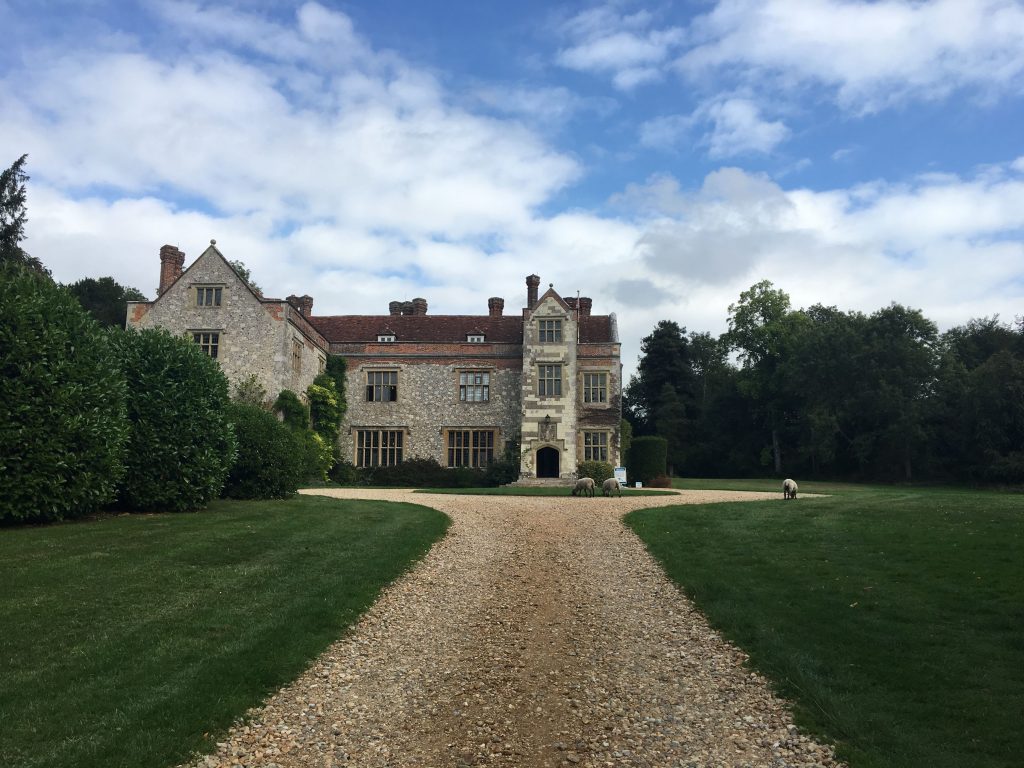The recipient of the inaugural BARS Chawton House Travel Bursary reports back from her time conducting research in Hampshire…
BARS Chawton House Travel Bursary Report by Francesca Kavanagh
It is always a special circumstance when a household library remains relatively intact over the centuries and more impressive still when such a collection contains its own historical catalogues. Such is the case of the Knight Collection at Chawton House. Owned by the descendants of Jane Austen’s brother, Edward Austen Knight, the Knight Collection is housed and maintained by the exceptional staff and volunteers at Chawton House. Its two 1818 catalogues allow researchers to determine which books in the collection Jane Austen likely had access to and provide fascinating insight into the texts which a family in the eighteenth and early nineteenth century such as the Knights deemed fit and enticing enough to want to own. These two aspects of household libraries – the circulation among familial networks and the counterweight of an individual’s desire for personal ownership – are made evident in the act of inscribing a text. The inscriptions of Jane Austen’s nieces found in both the Knight Collection and the general collections are what drew me to Chawton House in August this year. With the generous support of the BARS Chawton House Travel Bursary, I spent two weeks working with these collections examining the material and affective significance of ownership and gift inscriptions penned by the women of the Austen and Knight families.
My PhD thesis investigates the production of spaces of intimacy in the practices of letter-writing, annotation and commonplacing by women in the long-eighteenth century. In my time at Chawton House, evidence of ownership and gift inscriptions enabled me to extend my research on annotation by providing significant examples of the affective materiality of this practice. The positioning of inscriptions and the details they document, work to place the owner in a relationship not only with the gifter but also, in the case of the Knight Collection, with the larger library collection. The books belonging to Jane Austen’s niece, Marianne, provided an engaging and thought-provoking example.
There are a number of books signed by Marianne in the Knight Collection but a three-volume set of illustrated works by Walter Scott powerfully demonstrates the way in which gift inscriptions can signify and unify communities of female readers. Each volume is bound in green leather faded to maroon on the spine. The first, The Lady of the Lake, was published in 1838 and the two others, The Lay of the Last Minstrel and Marmion: A Tale of Flodden Field, were published the following year. Each has gilded pages and gold crests which adorn their front and back covers. They comprise a set. And yet from the inscriptions we can see that they were gifted to Marianne not only on two separate occasions – 1 January 1845 as a new year’s present and almost two years later on 15 September 1846 for Marianne’s 45th birthday – but also by two different women. The first is a gift from Marianne’s ‘very affectionate Sister Louisa Knight’ [1] and the second gift comprising The Lay of the Last Minstrel and Marmion is from ‘Aunt Louisa’.[2] These two Louisas not only share a name but in continuing the gifting of the same set of books have expressed their shared affection for Marianne and each other. Each inscription is in Marianne’s hand and the unifying power of her neat and formal positioning of her words works to further connect this set and the two Louisas so that these three works stand as a single, unified testament to the intimate and familial connection of these three women within the larger collection of the Knight’s family library.

Figure 2: Marianne’s inscriptions in her three volumes of Walter Scott gifted to her by her sister and aunt. Image courtesy of the Knight Family Collection on deposit at Chawton House.
Marianne’s small collection of Scott’s works is just one of many instances of captivating ownership and gift inscriptions in the collections at Chawton House and I must extend my sincere thanks to Darren Bevin for his help in locating many others and for answering my endless list of questions. My thanks also to the rest of the Chawton House staff and volunteers whose friendly, helpful manner and detailed maintenance of the library catalogue helped me to feel at home in the rabbit warren of house and archive.
The bursary, by enabling me to spend time in the presence of Marianne’s books and handwriting, as well as those of her cousins, ancestors and future generations of Knights, has provided me with a familiarity with their material significance which I could not otherwise have experienced, and which has been essential to the progress of my thesis.
[1] Inscription in Scott, Walter. Lady of the Lake by Sir Walter Scott, Baronet. Illustrated ed. London: Charles Tilt, Fleet Street, 1838.
[2] Inscription in Scott, Walter. The Lay of the Last Minstrel by Sir Walter Scott Baronet. Illustrated Edition. London: Charles Tilt, 1839, and Scott, Walter. Marmion: A Tale of Flodden Field by Sir Walter Scott Baronet. Illustrated ed. London: Charles Tilt, Fleet Street, 1839.

